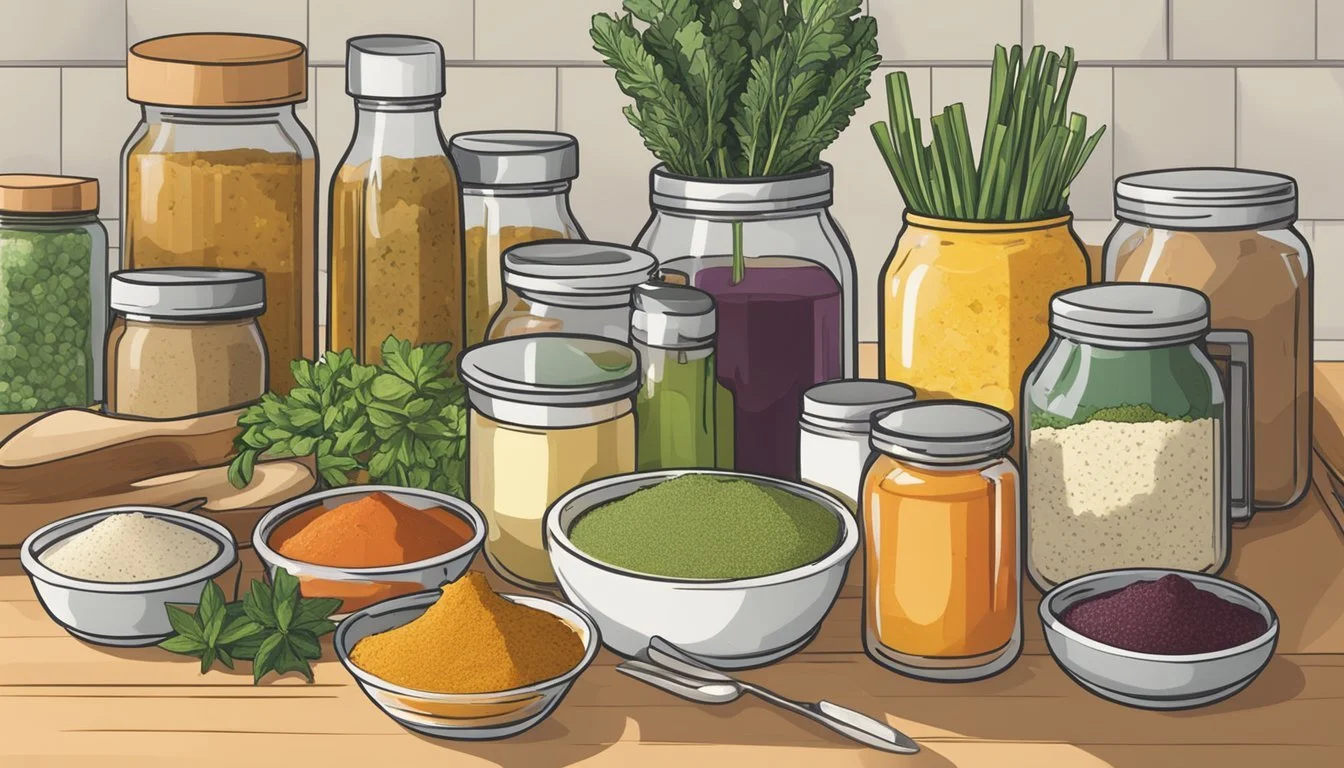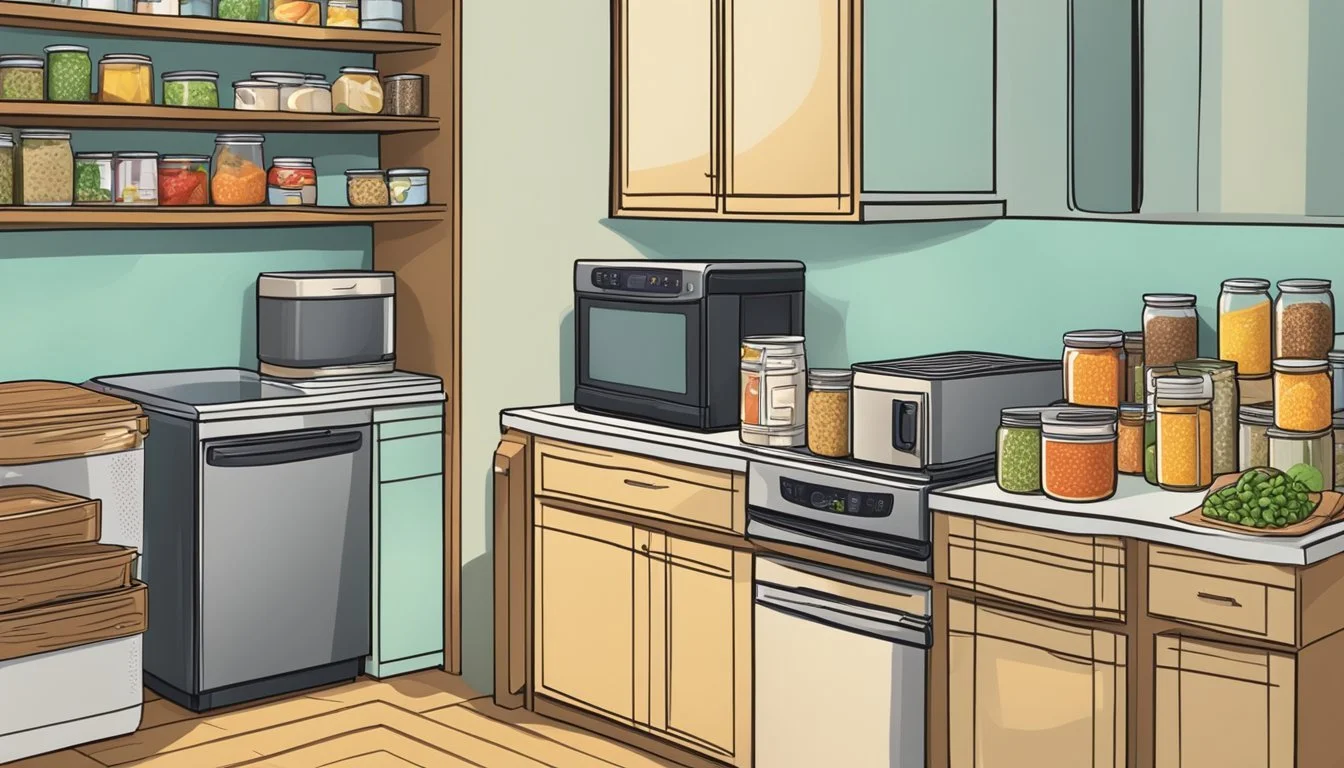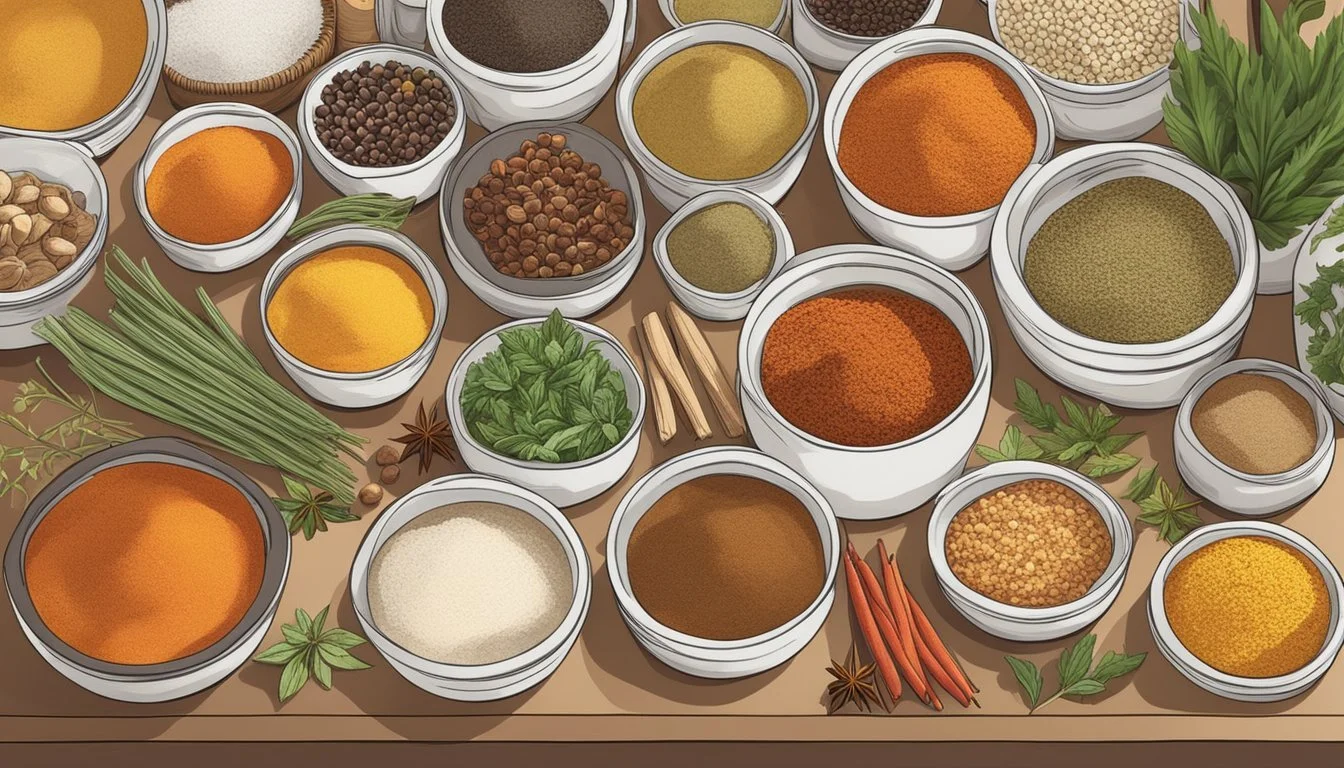How to Cook When You Have No Fresh Produce
Mastering Pantry Staples and Non-Perishables
Cooking without fresh produce can seem daunting at first, but it opens up a space for creativity and resourcefulness in the kitchen. Often, it's a matter of looking at what is on hand in a new light. Staples like grains, canned goods, and frozen produce can form the backbone of nutritious and satisfying meals. Exploring no-cook recipes can also offer a reprieve from traditional cooking methods, serving up fresh flavors and variety without the need for fresh produce.
The key to culinary ingenuity lies in composing a dish around a main component that is already available in the household. It might be utilizing the grains sitting at the back of the cupboard, the last cans of beans, or scouring the freezer for forgotten vegetables. These elements can be transformed into substantial meals with the help of a few pantry staples such as spices, oils, and broths. Frozen produce, which retains most of its nutritional value, can easily substitute fresh ingredients and work exceptionally well in cooked dishes.
Mastering the art of cooking with limited resources also includes understanding how to best store and use up ingredients before they spoil. Proper storage techniques can extend the shelf-life of items like root vegetables and certain fruits when fresh produce is available. This not only saves money but also reduces food waste, contributing to a more sustainable cooking practice. With a confident approach and a fundamental understanding of different ingredients and their potential, anyone can create delicious meals regardless of having fresh produce at their disposal.
Understanding Your Pantry
A well-stocked pantry is a foundation for creating satisfying meals, even without fresh produce. By identifying non-perishable ingredients and understanding the role of herbs and spices, one can create flavorful dishes that are both nutritious and enjoyable.
Identifying Non-Perishable Ingredients
Non-perishable ingredients serve as the backbone of a pantry, providing longevity and versatility. Essential items include:
Grains: These are a staple that can form the base of a meal. Key varieties to have on hand are brown rice and rice noodles, which offer both a hearty texture and a quick cooking time, respectively.
Proteins: Canned proteins such as canned tuna (What wine goes well with tuna?) are invaluable for their long shelf life and ease of use. They can be added to a variety of dishes for an additional protein boost.
Broth/Stock: Keeping a supply of broth or stock can enhance the flavor of grains like brown rice, serve as a base for soups, or be used to sauté foods to add more depth.
The presence of these ingredients ensures that one has the basics needed to prepare a meal with substance and satiety.
The Role of Herbs and Spices
Herbs and spices are the magic in the pantry that transform basic ingredients into flavorful feasts. A selection one might consider includes:
Dried herbs: Options such as thyme, oregano, and basil add an array of flavors and aromas that bring life to pantry-based meals.
Ground spices: Paprika, cumin, and black pepper are a few examples that can drastically alter and uplift a dish’s profile.
These components allow one to experiment and personalize the taste of their meals, ensuring that even the simplest of ingredients can evolve into a cuisine that’s far from plain.
Utilizing Your Freezer
When fresh produce is unavailable, the freezer becomes an invaluable resource for maintaining a nutritious diet. Frozen vegetables and fruits can serve as viable substitutes for their fresh counterparts, while proper storage techniques ensure quality and longevity.
Frozen Vegetables and Fruits
One can find a wide variety of vegetables and fruits in the frozen section that are perfect for cooking. These products are typically harvested at peak ripeness and frozen quickly, preserving their nutritional value. For example, one can use frozen spinach in a lasagna or frozen berries in a morning smoothie. It's important to remember that frozen produce may have a different texture after thawing, so they are better suited for cooked dishes rather than raw applications.
Vegetables: Use directly in soups, stews, and sautés without thawing to maintain the texture.
Fruits: Thaw gently in the refrigerator or at room temperature before adding to dishes, unless using in cooking or baking.
Proper Freezer Storage Techniques
Maintaining the quality of frozen produce relies on proper storage techniques. To prevent freezer burn and flavor loss:
Packaging: Store produce in airtight containers or freezer bags. Press out excess air before sealing to prevent ice crystals from forming.
Temperature: Keep the freezer set at 0°F (-18°C) or lower to preserve food quality.
Organization: Label and date all items in the freezer. This helps with rotating stock and using older items first.
| Item | Description | Packaging Tip |
|---------------------|---------------------------------------------------------|------------------------------------------------|
| Berries | Use directly from frozen or thaw for baked goods. | Single-layer freeze, then transfer to a bag. |
| Broccoli and Carrots| Ideal for stir-frying or steaming directly from frozen. | Blanch before freezing, then seal in a bag. |
| Peas and Corn | Add to dishes without thawing for best texture. | Freeze in portion-sized bags for easy use. |
By understanding the versatile use of frozen produce and employing sound storage techniques, one ensures a steady supply of nutritious food options, regardless of seasonal availability.
No-Cook Meal Ideas
In the absence of fresh produce, one can still create delicious and satisfying meals without the need for cooking. These ideas focus on utilizing pantry staples and ready-to-eat items to assemble meals that are both easy to prepare and delightful to eat.
Salads and Wraps
Salads and wraps offer a refreshing way to enjoy a meal without turning on the stove. Utilizing canned ingredients, such as tuna or white beans, one can craft a Mediterranean Tuna and White Bean Salad that's both nutritious and flavorful. The addition of a pesto vinaigrette infuses the dish with a bold taste that compensates for the absence of fresh vegetables.
Wrap Idea:
Tangy Chicken Salad with Grapes: Fold a chicken salad mixture with grapes and almonds into a large tortilla or lettuce leaves for a crisp and tangy wrap.
Creating Hearty Sandwiches
Sandwiches (What wine goes well with sandwiches?) are a quintessential no-cook meal, hearty and versatile. For a satisfying sandwich, one might consider making a muffuletta, which is a substantial Italian sandwich typically filled with a variety of meats, cheeses, and an olive salad spread. Without fresh produce, one can substitute with jarred pickled vegetables and condiments to create layers of flavor.
Sandwich Spreads:
Olive Salad Spread: Blend pitted olives, capers, (What wine goes well with capers?) and garlic with olive oil to create a robust sandwich topping.
Peanut Butter Whipped Cream Frosting: For a sweet sandwich spread, whip peanut butter with cream to create a light and decadent frosting perfect for pairing with fruit or chocolate bread.
Whipping Up Refreshing Soups
Soup might traditionally be served hot, but refreshing cold soups like an easy gazpacho can be prepared sans heat. This soup traditionally relies on ripe tomatoes, but using tomato juice as a base and adding finely chopped cucumbers and peppers from a jar can yield a flavorful alternative. Season with herbs and a splash of vinegar or citrus juice to brighten the taste.
Soup Example:
Simple Gazpacho: Combine tomato juice, diced jarred peppers, cucumber, a bit of onion, and a dash of garlic with seasoning, then chill before serving.
Getting Creative with Leftovers
When fresh produce is not an option, one can turn to leftovers to whip up delectable meals. By approaching leftover ingredients with a creative mindset, one can reinvent them into dishes that may even surpass the original meal in flavor and appeal.
Reinventing Meals with Leftover Ingredients
Leftovers present a prime opportunity to transform yesterday's meal into today's culinary delight. One can start with a rotisserie chicken, an incredibly versatile leftover. The cooked chicken can be shredded and added to soups, salads, or wraps. For instance, an Asian-inspired chicken salad with a soy and honey vinaigrette can be a refreshing take on a classic dish.
Soup: Shredded chicken, cooked vegetables (how long do cooked vegetables last?), and any remaining broth can become the base for a hearty chicken soup.
Salad: Combine shredded chicken with mixed greens, nuts, and a light dressing for a quick lunch.
Wrap: Use a tortilla or lettuce leaf to wrap chicken with fresh or pickled vegetables.
Zucchini noodles are another great leftover to have on hand, offering a low-carb and healthy base for a variety of sauces and proteins.
Pasta substitute: Toss zucchini (What wine goes well with zucchini?) noodles with a tomato sauce or pesto for a quick meal.
Stir-fry: Sauté with other vegetable leftovers and a savory sauce for an easy stir-fry.
Mediterranean Inspirations
The Mediterranean diet emphasizes the use of simple, wholesome ingredients, which can easily incorporate leftovers. Here are two ways leftovers can be given a Mediterranean twist:
Grains: Leftover cooked grains like brown rice can be rejuvenated to make a Mediterranean-inspired rice salad. Toss the rice with chopped tomatoes, cucumbers, olives, feta cheese, and a lemon-olive oil dressing.
Frittata: Leftover vegetables like spinach can be revitalized in a frittata. Whisk together eggs, milk, season with salt, pepper, and herbs like basil or parsley, then pour over vegetables in a pan. Sprinkle feta cheese on top and bake until set.
Leftover Veggies: Mix with eggs, cheese, and herbs to create a frittata, quiche, or omelet.
Cheese and Herbs: Use to top, stuff, or finish dishes, enhancing flavor profiles with a Mediterranean flair.
In transforming leftovers into new meals, one not only reduces waste but also discovers the joy of creating something delicious and unexpected from what's already available.
Alternative Protein Sources
When fresh produce is not available, one can turn to nutritious and protein-rich alternatives. These include a variety of nuts and seeds, as well as legumes, and even shelf-stable canned seafood. These sources are not only versatile and easy to store but also packed with essential nutrients.
Nuts and Seeds
Nuts and seeds are powerhouse sources of protein and other nutrients. They can be consumed raw, roasted, or as butters. For instance:
Almonds: A tablespoon of almond butter provides approximately 3-4 grams of protein.
Peanuts: Similarly, a tablespoon of peanut butter offers a protein content equivalent to almonds.
Seeds: Options like pumpkin seeds or sunflower seeds are also high in protein, making them an excellent snack or salad topping.
These can be included in one's diet in various ways, from snacking to adding them into meals like stir-fries or on top of oatmeal.
Legumes and Canned Seafood
Legumes such as beans and lentils are not only affordable but also a sustainable protein source. They are high in fiber and B vitamins, essential for a healthy diet. Legumes can be used in a multitude of dishes including soups, stews, and salads. A simple and nutritious option is hummus, a spread made from chickpeas, which can be easily prepared at home.
Canned seafood, such as tuna, is another excellent source of protein that is easily storable and convenient. A can of tuna offers a significant amount of protein, which can be added to salads, sandwiches, or even pasta dishes to enhance their nutritional value.
Canned Tuna: A standard can of tuna (approximately 142g drained) contains around 27 grams of protein.
Canned Salmon: Another option that provides a similar amount of protein and essential omega-3 fatty acids.
Switching between these sources can provide variety and ensure one's diet remains balanced even without fresh produce.
Flavor Boosters
In times when fresh produce is not available, a cook's creativity can turn to pantry and refrigerator staples that offer a punch of flavor. Condiments, pickles, citrus, and olives become key players in transforming a meal from bland to bold.
Using Condiments and Pickles
A well-stocked pantry should include a variety of condiments that add depth and complexity to dishes. Soy sauce is a quintessential ingredient that imparts a savory, umami quality, ideal for seasoning stir-fries or for marinating proteins. Similarly, capers and pickles bring piquancy and a tangy bite to salads, dressings, and sauces. They can serve as accents or be chopped up and combined with herbs to form a relish.
Soy Sauce: Use as a marinade or seasoning
Capers and Pickles:
Add whole to salads for bursts of flavor
Chop and mix into dressings
Incorporating Citrus and Olives
The acidity and zest of citrus fruits can elevate a dish, substituting the fresh element that might otherwise be missing. A squeeze of lemon or lime juice, or even the addition of their zests, can brighten up soups, grains, and pasta dishes. Olives offer a briny kick to stews and salads or can be chopped to create a tapenade for spreading on bread or mixing into dishes as a seasoning component.
Citrus:
Lemon or lime juice to finish dishes
Zests as garnish or in dressings
Olives:
Whole or sliced in Mediterranean dishes
Chopped for tapenade or as a garnish
Sustainable Cooking Practices
Sustainable cooking practices are essential for minimizing the environmental impact of food consumption. These strategies help reduce food waste and greenhouse gas emissions, contributing to a more eco-friendly kitchen.
Reducing Food Waste at Home
Every year, households contribute significantly to food waste, much of which could be avoided with conscientious practices. Planning meals in advance and buying only what is needed can drastically cut down on the amount of unused food. Storing food correctly extends its lifespan. For instance, keeping herbs in water or refrigerating certain fruits and vegetables ensures their longevity. Utilizing leftovers can also be a creative culinary challenge that not only saves food but also leads to discovering new recipes.
Buy what you need: Make a detailed shopping list before purchasing groceries.
Proper storage: Use airtight containers and correct temperature settings.
Leftover creativity: Transform leftovers into new meals to avoid discarding them.
Composting and Recycling Tips
Composting is a powerful method to transform food waste into nutrient-rich soil. By composting organic matter like vegetable scraps, one can reduce the amount of waste going to landfills, thereby reducing methane emissions—a potent greenhouse gas. If composting at home isn't an option, seeking out community compost programs allows households to still participate in this sustainable practice. Recycling packaging and other materials further minimizes the environmental footprint.
Home composting: Collect food scraps in a designated bin and maintain proper conditions for decomposition.
Community programs: Utilize local facilities for composting if available.
Recycle: Properly sort recyclables according to local guidelines to ensure they are processed correctly.
By implementing these sustainable cooking practices, individuals can play a part in reducing the ecological impact of food-related activities while also enjoying a more efficient and environmentally conscious home kitchen.
Establishing an Indoor Garden
When fresh produce is not available, establishing an indoor garden can provide a reliable source of herbs and small vegetables, ensuring ongoing nutrition. They can set up their garden near a natural light source or use artificial lighting to meet the plants’ requirements.
Growing Herbs and Small Vegetables
For those looking to cultivate their own ingredients, starting with herbs and small vegetables is a wise choice. They require less space and can be managed more easily indoors. For the best results, they should ensure their plants receive 12-16 hours of light per day. This can be achieved through natural sunlight or full-spectrum grow lights if sunlight is inadequate. Useful herbs such as parsley, basil, and cilantro, or vegetables like cherry tomatoes and peppers, are excellent for indoor gardening due to their size and light requirements. People should choose containers with proper drainage and use a nutrient-rich potting mix to foster healthy growth and avoid mold. Fertilization is also critical; they can either use store-bought fertilizer or create a nutrient solution, like compost tea, to feed their plants.
Sprouting Seeds and Legumes
Sprouting seeds and legumes is a simple way to enrich one's diet with nutrients and is highly suitable for indoor conditions. The essentials for sprouting include quality seeds or legumes, a jar, water, and a breathable cover for the jar, like cheesecloth. The process involves soaking the seeds or legumes, traditionally alfalfa, lentils, or chickpeas, overnight, then draining and rinsing them several times a day until they begin to sprout.
Steps for Sprouting Description 1. Soaking Submerge seeds/legumes in water for 8-12 hours. 2. Rinse and Drain After soaking, drain water and rinse seeds/legumes thoroughly. 3. Repeat Continue rinsing and draining 2-3 times daily. 4. Harvest Once sprouts grow, usually within 3-7 days, they are ready to eat.
By following these steps, individuals can enjoy fresh sprouts that are rich in nutrition, including essential vitamins and minerals, which can contribute to well-balanced meals.
Exploring World Cuisines
When fresh produce isn't available, one has the perfect opportunity to delve into international no-cook dishes and imaginative fusion recipes. These options often celebrate the use of shelf-stable ingredients while still delivering global flavors.
International No-Cook Dishes
Avocado plays a pivotal role in Mexican cuisine, especially in dishes such as guacamole. A simple yet delectable guacamole recipe involves mashing ripe avocados with a fork and then mixing them with lime juice, salt, and red onion for a quick and refreshing dip or spread.
Italian cuisine offers options such as Caprese salad (What wine goes well with caprese salad?), traditionally made with fresh tomatoes and mozzarella, but when tomatoes aren’t available, one might experiment with cantaloupe (how long does cantaloupe last?) slices paired with mozzarella and a drizzle of balsamic glaze for a sweet and savory twist.
Cuisine Dish Main Ingredients Mexican Guacamole Avocado, Lime, Red Onion Italian Cantaloupe Caprese Cantaloupe, Mozzarella
Fusion Recipes
Fusion recipes can marry flavors from different world cuisines in innovative ways. For example, combining mango and salsa elements can create a tropical-inspired salsa without the need for fresh tomatoes. The sweetness of mango complements the heat from jalapeños and the tang from lime juice.
Creating a zucchini carpaccio is another approach, one might take inspiration from French cuisine's raw preparations. Thinly slice zucchini and dress it with a lemony vinaigrette, capers, and Italian Parmesan, blending Mediterranean flavors into a cohesive, fresh-tasting dish.
Mango Salsa:
Chopped mango
Diced red onion
Chopped cilantro
Lime juice
Salt
Diced jalapeños (optional)
Zucchini Carpaccio:
Thinly sliced zucchini
Lemon juice
Olive oil
Capers
Shaved Parmesan cheese
Salt and pepper
Through these methods, one can both broaden their culinary horizons and bypass the need for fresh produce, proving the adaptability and creativity present in cooking.
Dining Out Smartly
When exploring dining options without fresh produce at home, one can still make intelligent choices. The focus here is on selecting establishments that offer fresh ingredients and identifying items on the menu that require no cooking yet are rich in nutrition.
Selecting Restaurants with Fresh Options
Restaurants that emphasize fresh ingredients should be the priority for those seeking nutritious meals while dining out. Patrons are advised to look for eateries that source their produce locally or have a reputation for seasonality. Establishments with a farm-to-table approach often have daily specials reflecting the freshest ingredients available.
Look for:
Restaurants with farm-to-table concepts
Eateries that list local sourcing practices
Daily specials that likely use the freshest produce available
Navigating Menus for No-Cook Choices
Once at a restaurant, patrons should steer towards menu sections that frequently contain no-cook items packed with fresh components. Salads or raw appetizers are typically good options, as they are often prepared with a variety of vegetables and require no cooking—thus preserving nutrition and freshness.
Menu Sections to Consider:
Fresh salads
Raw or cured appetizers
Cold soups or gazpachos
Remember that portion control is key, even with healthy choices, as restaurant servings can be generous. One might request half portions or box up a portion before starting the meal to avoid overindulgence.









